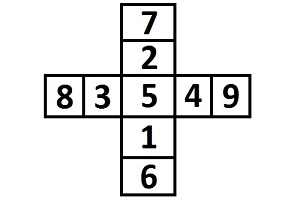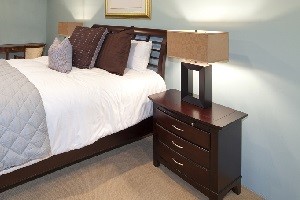During the imperial eras reigned by emperors, furniture in the palaces were meticulously crafted to ensure that they meet auspicious dimensions.
Not just that.
Everything from room length and breath, spacing width between tables and chairs, height of fixtures and fittings, etc, all go through the same level of scrutiny to ensure that royalty is blessed with prosperous dimensions and measurements wherever they stand or sit.
It’s a shame that these practices are not as widespread today.
Probably because implementation can be tedious even with a feng shui ruler.
But these additional tasks should be welcomed by someone with feng shui OCD.
The feng shui ruler (文公尺) is a simple tool that marks out the measurements of auspicious and inauspicious dimensions on a measuring tape.
This allows a home design planner or a user to design or create layouts that adhere to lucky dimension specifications.
However, don’t for a moment think that this is a simple feng shui concept.
There are very complex theories and equations involved. Just that the ruler simplifies everything for application in real life.
It is believed that it was created by the infamous Chinese carpenter Lu Ban (鲁班). And thus, the tool is also sometimes referred to as the lu ban ruler.
How the feng shui ruler works
The feng shui ruler segments spaced into 8 sections that add up to approximately 17 inches (43cm) which is commonly known as one feng shui foot.
Namely:
- Cai (財)
- Bing (病)
- Li (離)
- Yi (義)
- Guan (官)
- Jie (劫)
- Hai (害)
- Ben (本)
The above is the correct order of the 8 sections.
At the end of the 8th section Hai, the measurements repeat itself in a cycle by commencing at Cai again.
Like 8 mansions feng shui with 8 categories, the 8 cycles of the ruler are further categorized into 4 auspicious and 4 inauspicious sections.
The 4 auspicious sections are Cai, Yi, Guan and Ben. The inauspicious sections are Bing, Li, Jie and Hai.
Each section, or segment as some call it, is further divided into 4 parts.
Let’s look deeper into more detail of each section.
1) Cai
Cai is translated as wealth or fortune.
The feng shui ruler dimensions start with cai from 0 to 2⅛ inches (0 to 5.4cm).
It is the first segment of the feng shui measurement cycle.
The 4 parts are in order of:
- Money luck (财德)
- Accumulation of valuable assets and resources (宝库)
- 6 categories of good fortune and harmony (六合)
- Abundance (迎福)
This is the luckiest of all ruler sections and everybody who wants to implement auspicious dimensions into their homes should strive to be within this section as much as possible.
2) Bing
The meaning of Bing is literally sickness.
You don’t need to be a professor to know that this is not a favorable section.
The measurements for this section takes up 2⅛ to 4¼ inches (5.4 to 10.7cm).
The 4 parts that it consist of are:
- Wealth loss and reduced income (退财)
- Financially related legal problems (公事)
- Legal problems and imprisonment (牢执)
- Death of partner (孤寡)
This is the first of 4 unlucky sections of the feng shui ruler and they should be avoided like the plague.
3) Li
Li stands for faraway or separation.
In this context, it refers to separation from wealth.
It is the second inauspicious section after Bing and runs from 4¼ to 6⅜ inches (10.7 to 16.1cm).
It is a section made up of the following sub-sectors:
- Storing of bad luck and negative energy (长库)
- Direct financial loss (劫财)
- Running into scammers and cheaters (官鬼)
- Theft and burglary (失脱)
As you can tell, the auspicious and inauspicious sections don’t follow each other by rotating one after another.
They are actually configured to take turns in pairs to position themselves on the feng shui measuring tape.
The cycle goes from 2 auspicious sections by 2 inauspicious sections. And goes on and on.
4) Yi
The definition of the Mandarin word Yi is righteousness and generally brings luck with benefactors and mentors.
It measures from 6⅜ to 8⅟₂ inches (16.1 to 21.5cm).
It’s 4 parts are:
- Descendants luck (添丁)
- Windfall and indirect wealth luck related to influential people (益利)
- Capable and talented son (贵子)
- Influence luck (大吉)
After the 2 unlucky sections of Bing and Li, the ruler moves back into lucky areas.
5) Guan
In Chinese language, a Guan refers to an officer so this section generally represents power and authority.
It is also associated with academic achievements.
On the scale, it takes up the portion from 8⅟₂ to 10⅝ inches (21.5 to 26.9cm).
It is made up of 4 sub-sections of:
- Academic success (顺科)
- Luck with speculations (横财)
- Unexpected increase in personal income (进益)
- Recognition and status for family (富贵)
If you are designing a room for your children, these dimensions would provide them with education luck in their studies.
6) Jie
Jie is translated as robbery or theft.
This whole section is very bad luck and should be avoided absolutely as it can result in total loss.
It takes up the segment from 10⅝ to 12³⁄₄ inches (26.9 to 32.2cm).
The 4 smaller parts consist of:
- Loss of something very important (might be a person) (死别)
- Losing everything (退口)
- Shamed and rejected by people (离乡)
- Catastrophic loss of money (财失)
You could become a victim of very bad luck cycles if you align your furniture and fixtures to these dimensions.
7) Hai
When translated, Hai means to harm. It can also mean evil.
It measures from 12³⁄₄ to 14⁷/₈ inches (32.2 to 37.6cm).
The 4 parts are:
- Life obstacles (灾至)
- Loss of loved ones (死绝)
- Illness and bad health (病临)
- Scandals and conflicts (口舌)
Following this, the last of the 8 sections is Ben.
8) Ben
Ben refers to origins.
It is the 4th auspicious section that rounds up the 8 sections of the feng shui ruler.
Ben takes up the space from 14⁷/₈ to 17 inches (37.6 to 43cm).
The 4 sub-segments are:
- Incoming wealth (财至)
- Success in examinations (登科)
- Plenty of valuable items (进宝)
- Abundance and prosperity (兴旺)
At the end of the Ben measurement of 43cm, the first section of Cai comes next as the whole cycle of 8 sections repeats itself.
Putting feng shui dimensions to good use
As mentioned earlier, feng shui service providers seldom incorporate auspicious measurements in their consultations and audits due to how laborious it can be.
Imagine having to bring a feng shui measuring tape and measure all the dimensions of EVERYTHING in a house from the height of dining tables to the space between the wall and the side of the bed frame.
So don’t expect practitioners to do this job for you.
However if you have your interest piqued by feng shui dimensions, surely you must be ready to take on the tasks yourself.
Here are some of the things at home that you might want to measure dimensions and distances.
- Dimensions of altar
- Distance between sofa and TV console
- Height of feature wall
- Length, width and height of aquarium
- Length and breadth of main door and windows
- Length, breadth and height of dining table
- Distance between walls and beds, workstation, sofa set
- Dimensions of cupboards and wardrobes
- Height of air-conditioner unit and water heaters
- Picture frame dimensions
- etc
The implementation of dimensions using the feng shui ruler is simple.
Ensure the measurements fall within any of the 4 auspicious sections by making adjustments to the placement of furniture and fittings.
You can even implement it during the designing stage before renovation and remodeling works get on the way.
While contractors and interior designers might roll their eyes at you the moment you bring up this topic, remember that you are paying them to serve you.
So you have every tight to insist on your dimensions being enforced.
When combined with flying star feng shui, dimensions can be extremely potent in harnessing good luck and fortune.
Lastly, something to note when you are using a feng shui ruler is that the measuring tape comes with two rows of characters along the reading line.
The top row would consist of the information as described above which is for the practice of yang feng shui. The bottom row is for the practice of yin feng shui.
For feng shui of a house for the living, only take reference from the top row.
















